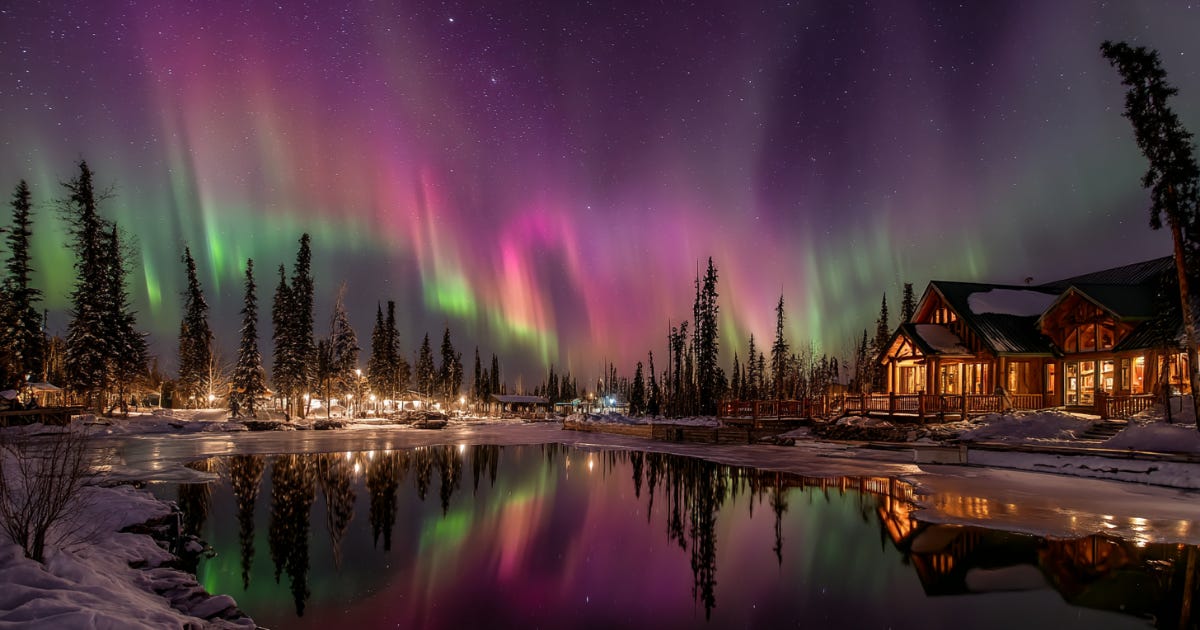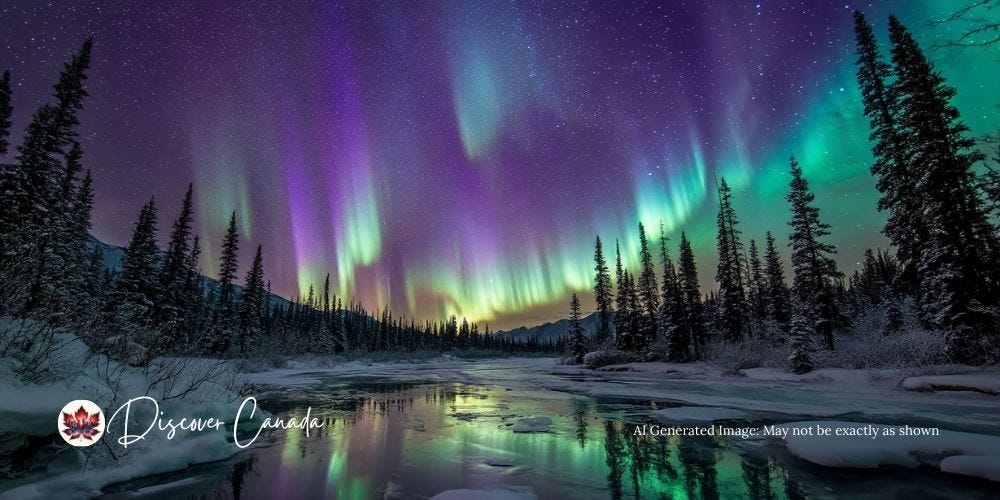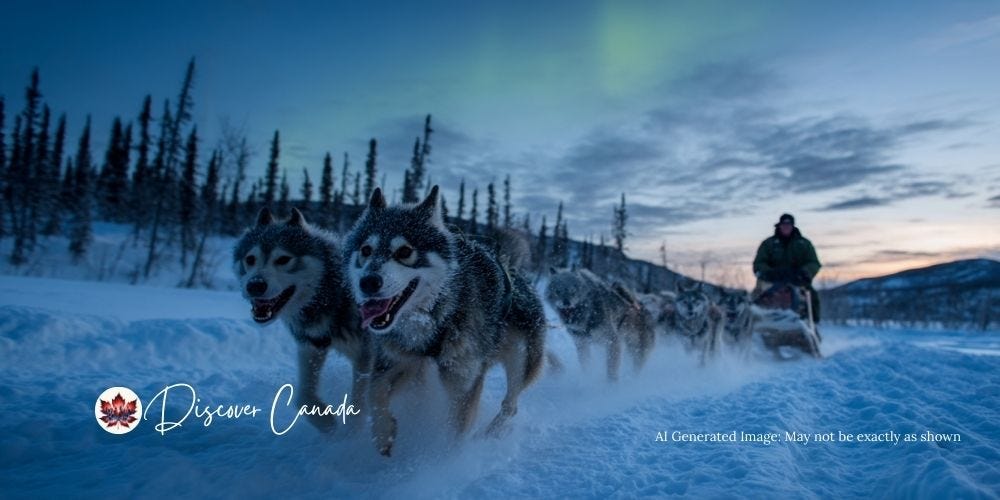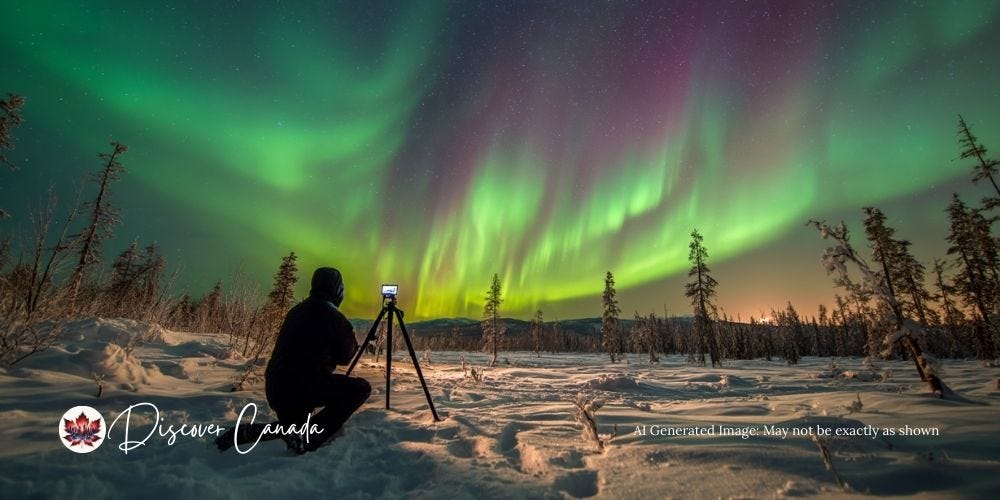Northern Lights Canada: Ultimate Guide to the Dancing Skies
Discover the best places, times, and tips for seeing the Northern Lights in Canada — from luxury stays to unforgettable winter adventures.
🎧 Listen While You Read
Hit play and let the audio set the mood while you dive into this guide — the words will take you north, but the sounds will bring the magic even closer.
Northern Lights in Canada: The Ultimate Guide to Experiencing the Dancing Skies
Imagine standing in the stillness of a winter night, your breath curling in the frosty air. Overhead, a faint shimmer begins to ripple across the darkness — a green arc stretching from one horizon to the other. Moments later, the sky is alive, twisting and swirling in shades of emerald, violet, and gold. This is the Northern Lights in Canada, and it’s not just a sight — it’s an experience that lodges itself in your memory forever.
From the remote Arctic communities of Nunavut to the lively warmth of Yukon’s winter festivals, Canada offers some of the best aurora viewing in the world. Whether you’re dreaming of glass-roof chalets, guided photography tours, or nights spent by a crackling fire under the auroral oval, this guide will take you through the science, the destinations, and the little luxuries that make the trip unforgettable.
✨ Key Takeaways
Prime Locations 🗺️ – Discover the top regions in Canada for reliable Northern Lights sightings.
Best Times 📅 – Learn when and how to time your trip for the highest chance of success.
Luxury & Comfort 🛷 – From heated aurora domes to gourmet dining under the stars.
Pro Tips 📸 – Essential advice for capturing stunning aurora photographs.
🌌 The Magic and Science of the Aurora Borealis
The Northern Lights, or Aurora Borealis, are one of nature’s most spectacular shows — but behind the beauty lies fascinating science. These glowing curtains of light occur when charged particles from the sun collide with gases in Earth’s atmosphere. The result? A breathtaking light display that can shimmer in greens, purples, reds, and even blues.
What Causes the Northern Lights
High-energy particles from the sun travel millions of kilometres before slamming into Earth’s magnetic field. This invisible shield directs the particles toward the polar regions, where they interact with oxygen and nitrogen in the atmosphere. Oxygen tends to produce green and red hues, while nitrogen adds blue and violet tones to the display.
Why Canada is a Prime Viewing Destination
Canada sits directly under the auroral oval — the doughnut-shaped zone around the Earth’s magnetic poles where Northern Lights activity is strongest. With vast stretches of low light pollution and crisp, clear winter nights, Canada offers some of the world’s most reliable aurora viewing opportunities. From Yukon’s remote valleys to Nunavut’s Arctic tundra, your chances of catching the show here are some of the best on the planet.
🏔️ Luxury Lodges and Unique Stays
Seeing the Northern Lights in Canada is magical on its own — but staying somewhere designed to showcase the aurora turns the experience into a once-in-a-lifetime journey. Across the north, creative lodgings blend comfort, style, and prime viewing spots so you can watch the skies dance without ever leaving your slippers.
Glass-Roof Chalets & Domes – Yukon
In the Yukon, some accommodations feel purpose-built for aurora magic. Imagine lying in bed under a transparent roof as the sky comes alive in shades of green and violet, or stepping out of a steaming sauna to find the horizon glowing.
Northern Lights Resort & Spa (Whitehorse) – Aurora Glass Chalets with floor-to-ceiling windows, Finnish sauna, gourmet dining, and fireside lounging between shows.
Aurora Inn (Dawson City) – Gold Rush charm meets modern comfort, with select rooms featuring private jacuzzis for post-aurora soaking.
Sundog Retreat (near Whitehorse) – Private cabins paired with an outdoor sauna and hot tub, perfect for late-night stargazing.
Heated Viewing Domes – Manitoba
On the edge of Hudson Bay, Churchill offers one of the most comfortable ways to watch the lights: heated Plexiglas domes set in the open tundra, far from any light pollution. Here, you can sip hot cocoa, watch the colors ripple overhead, and step out briefly for those all-important tripod shots.
Aurora Domes (Churchill) – Warm, clear “bubbles” designed for uninterrupted viewing, ideal for photographers and sky watchers alike.
Churchill Hotel’s Aurora Domes – Adds shuttle service, hot snacks, and even midnight wake-up calls when the lights appear.
Remote Wilderness Lodges – Northwest Territories & Beyond
For travellers craving ultimate seclusion, the Northwest Territories and northern outposts deliver luxury deep in the wild. Accessible only by small aircraft or winter road, these lodges place you in some of the darkest skies in the world, where the aurora can seem close enough to touch.
Blachford Lake Lodge (Yellowknife) – Reachable only by bush plane, offering luxury wilderness cabins, chef-prepared meals, and aurora alert systems.
Grace Lake Villa (Yellowknife area) – A peaceful lakeside retreat with personalized viewing experiences.
Jenny’s B&B & Lou & Francis Guest House – Intimate stays where local hosts double as expert aurora guides.
Whether you’re lying back in a glass-roof chalet, wrapped in blankets inside a glowing dome, or sipping wine beside a frozen lakeshore, these stays prove you don’t have to rough it to enjoy the most beautiful show on Earth.
🗓️ Planning Your Northern Lights Adventure
Catching the Northern Lights in Canada is part science, part luck — but with smart planning, you can tip the odds heavily in your favour.
Best Time of Year & Moon Phases
The prime season runs from late September to late March, when nights are longest and skies are darkest. Within that window, aim for new moon periods to minimize light interference. While deep winter offers the most extended viewing hours, autumn and early spring can provide milder temperatures and equally stunning displays.
Weather & Light Pollution Considerations
Clear skies are your best friend. Even the most intense aurora won’t shine through heavy cloud cover, so check local forecasts and be flexible with your plans. Seek out dark-sky areas far from city lights — national parks, rural lodges, and remote tour sites will dramatically improve visibility.
Tours vs. Independent Travel
Guided Tours 🚐 – Ideal for first-time aurora chasers. Guides know the best viewing spots, handle transportation, and often provide warm gear and photography tips.
Independent Travel 🚙 – Gives you flexibility and the thrill of finding your own perfect spot. Just be sure to research safe winter driving routes, have a reliable vehicle, and pack for extreme cold.
Whether you go guided or solo, build in multiple nights at your destination. The aurora doesn’t run on a schedule, so giving yourself a few evenings greatly increases your chances of a show-stopping display.
🎿 Activities Beyond the Aurora
While the Northern Lights in Canada might be the main event, the magic doesn’t stop when the sun is up. These regions are winter playgrounds, offering adventures and cultural experiences that round out your trip and make it unforgettable.
Dog Sledding Adventures
Glide silently across frozen lakes behind a team of eager huskies. In places like Yellowknife, Whitehorse, and Churchill, dog sledding is more than a tourist activity — it’s a deep-rooted northern tradition. Many tours include meeting the dogs, learning basic mushing commands, and even steering the sled yourself.
Snowshoeing & Cross-Country Skiing
Step into a pair of snowshoes or clip into skis to explore the pristine backcountry. Trails range from easy forest loops near Whitehorse to more challenging routes in Torngat Mountains National Park. The crisp air, silence, and sparkling snow make for a meditative experience.
Ice Fishing
Drop a line into a frozen lake and try your luck catching Arctic char, lake trout, or walleye. Outfitters in Nunavut, Manitoba, and Northwest Territories provide heated shelters, gear, and even fresh-cooked meals from your catch.
Indigenous Cultural Experiences
Across the aurora belt, Indigenous guides share stories, traditions, and knowledge passed down for generations. In Aurora Village (Northwest Territories), warm up in a teepee while listening to legends of the dancing lights. In Nunavut, try bannock-making over an open fire or learn about traditional Arctic survival skills.
Photography Workshops
For those serious about capturing the aurora, many operators offer guided photography sessions. You’ll get hands-on tips for night shooting — from tripod stability in snow to camera settings for vivid colors — plus advice on composing shots that tell a story.
From the adrenaline of mushing across a frozen expanse to the quiet focus of lining up the perfect photograph, these activities make the daylight hours just as special as the night.
💡 Pro Tip: How to Photograph the Northern Lights
Photographing the Northern Lights in Canada can be as rewarding as seeing them. Here’s how to get it right:
Bring a sturdy tripod to keep your camera steady in the cold.
Use a wide-angle lens with a low f-stop (f/2.8 or lower is perfect).
Set your camera to a high ISO (800 to 3200) and experiment with shutter speeds between 5–20 seconds.
Dress warmly and be patient — the lights can appear and change quickly, so keep your camera ready and enjoy the show.
Conclusion:
In the end, chasing the Northern Lights in Canada is about more than just a bucket-list checkmark. It’s about immersing yourself in a landscape where nature’s most spectacular performance meets warm Canadian hospitality. From the thrill of dog sledding by day to the awe of watching emerald lights swirl overhead at night, every moment becomes a story you’ll carry with you.
So pack your warmest layers, charge your camera, and get ready to experience the dancing skies in true style. Canada’s Northern Lights are waiting — and so is the adventure of a lifetime.
Frequently Asked Questions
Curious about planning your Northern Lights in Canada adventure? Here are answers to the most common questions travellers ask.
When is the best time to see the Northern Lights in Canada?
The prime viewing season runs from late September to late March, when nights are longest and skies are darkest. For the clearest conditions, aim for a new moon period and choose a location with minimal light pollution.
Where is the most reliable place to see the Northern Lights in Canada?
Yellowknife, Northwest Territories is often considered the most reliable spot, with up to 240 clear nights per year. Other excellent locations include Whitehorse (Yukon), Churchill (Manitoba), and remote areas of Nunavut.
What should I wear for a winter Northern Lights trip?
Dress in multiple warm layers, including thermal undergarments, insulated outerwear, mittens, a hat, and insulated boots. Nighttime temperatures can drop well below freezing, especially in the Arctic.
Can you see the Northern Lights from Banff or Jasper?
Yes, but sightings in Banff and Jasper National Parks are less frequent than in the far north. When they do occur, the aurora is often visible from dark-sky areas within the parks.
Do I need a tour to see the Northern Lights in Canada?
No — you can plan an independent trip if you’re comfortable with winter driving and navigation. However, guided tours offer expert location scouting, warm gear, and local knowledge, which can increase your chances of success.
Still have questions? Drop them in the comments — we’d love to help you plan your perfect aurora adventure.









Beautifully written! This really makes me want to book a trip to Canada immediately!